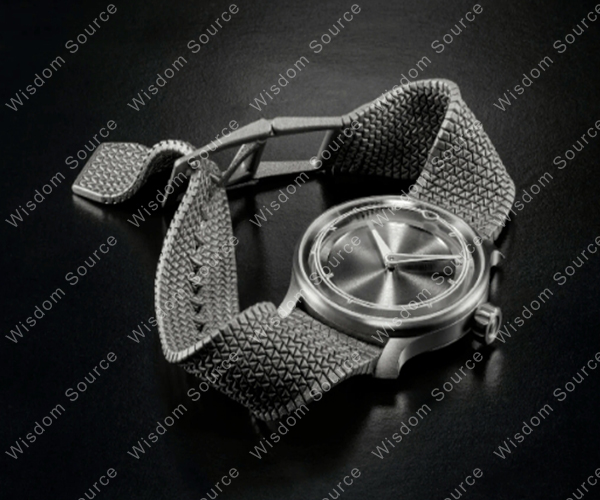Titanium Alloy Watch Strap: Hard-Core Material, Flexible Experience
Titanium Alloy Watch Strap: Hard-Core Material, Flexible Experience
When the 3D-printed titanium alloy bracelet of the independent watchmaking brand MING caused an industry shock, TITANIUM House—a domestic information platform in the field of titanium materials—conducted an in-depth report under the title "Rigidity and Softness: How 3D-printed titanium chains Reconstruct the aesthetics of the Wrist", calling it "A milestone in the civilization of titanium alloy."This mechanical revolution triggered by 1693 titanium alloy parts is redefining the wearing experience of high-end watches through the integration of digital manufacturing and materials science.
1. Topology: Digital Manufacturing Reconstructs Mechanical Aesthetics
The subversive design of the MING bracelet began with A breakthrough in the traditional manufacturing logic. After seven iterations, the designer used 3D printing technology to construct a topology composed of 1693 titanium alloy components. Each part is formed synchronously during the laser melting process to form a chain system with precise bite like an organism. This architecture completely gets rid of the limitations of manual polishing-the splicing of components that traditional craftsmen need to complete in a few months is completed in digital manufacturing through micron-level precision control and one-time “growth”. The combination of the ductility of titanium alloy and the layered melting characteristics of 3D printing makes the bracelet not only have the eternal texture of metal, but also show a leather-like flexible fit, realizing the binary unity of “comfort and durability”.

2. Material Poetics: The Wearing Revolution Caused By Lightweight
The choice of titanium alloy is the core code of this revolution. Compared with traditional stainless steel, its density is reduced by 45%, but its strength is increased by 30%. This “weight loss without loss of quality” characteristic has completely changed the physical experience of wearing a watch. When the bracelet fits the wrist with an almost sensorless weight, the cold feeling of the metal is dissipated by the bio-compatibility of the material itself, and replaced by a “second skin”-like sense of natural existence. The strict requirements of titanium alloys in the aerospace field-corrosion resistance, fatigue resistance, and high strength-have been transformed into absolute confidence in daily use in the watch scene: whether it is the violent vibration of the sports scene or the long-term test of the humid environment, the bracelet always maintains structural stability and lightness to the touch.
3. Manufacturing Revolution: Metal Weaving On The Micro Scale
The liberation of tranditional manufacturing by 3D printing technology is embodied in the MING bracelet as a kind of “micro-weaving” freedom. The laser beam travels between layers of 0.05mm in height, casting the titanium alloy powder into a complex hollow structure. This geometric form, which is difficult to achieve in traditional craftsmanship, has now become a dual carrier of bearing capacity and aesthetics. For the first time, designers were able to realize the poetic expression of “negative space” on metal: the streamlined grooves on the inside of the bracelet not only reduce weight, but also guide air circulation; the diamond-shaped lines on the outside enhance friction while forming a dynamic vision of light and shadow intertwined. The freedom given by digital manufacturing enables mechanical rationality to perfectly resonate with human sensibility.

4. Fusion Practice: the Eternal Dialogue Between Science And Technology And Art
MING's breakthrough lies not only in its technical parameters, but also in redefining the value dimension of "high-end watches". When the digital genes of 3D printing are injected into traditional watchmaking techniques, and when the rational characteristics of titanium alloy meet the emotional demands of ergonomics, the watch chain has risen from a simple connecting piece to a "wearable sculpture". This integration practice reveals a trend: Under the dual drive of material science and digital manufacturing, the innovation boundaries of traditional luxury goods are being continuously expanded - technology is no longer just a cold tool, but has become a medium for conveying warmth and beauty.
From aerospace to the tiny spaces on wrists, the application trajectory of titanium alloys proves a truth: when the material properties and manufacturing technology resonate with each other, even in traditional fields, disruptive forces can emerge. MING's 3D-printed bracelet is the manifesto of this silent revolution - it demonstrates with 1,693 titanium alloy parts that the future of advanced manufacturing will be a dance of technological rationality and human sensibility.
